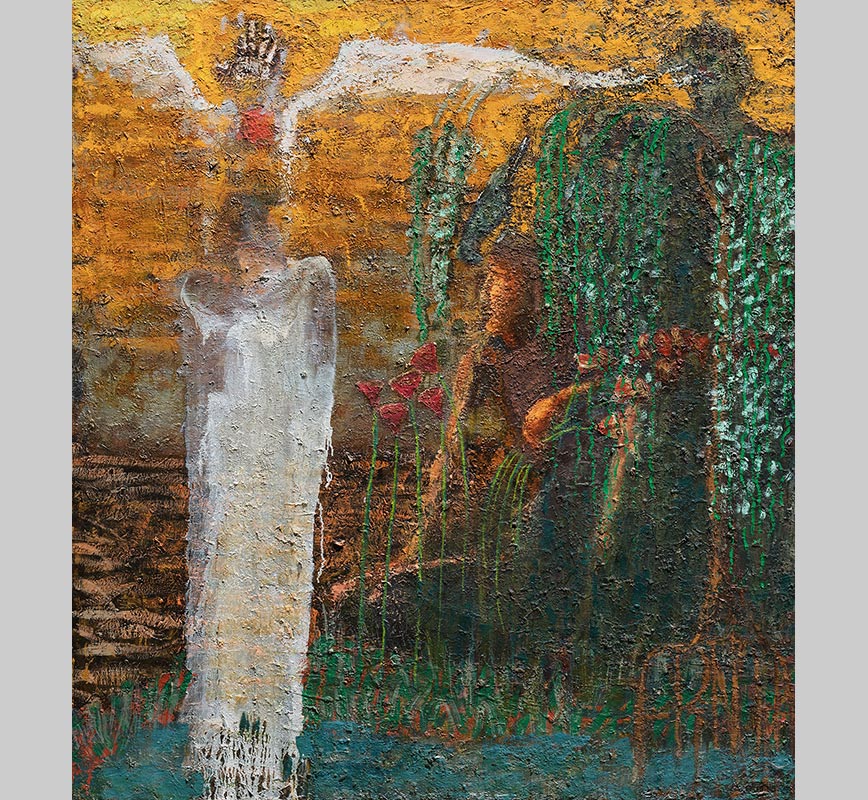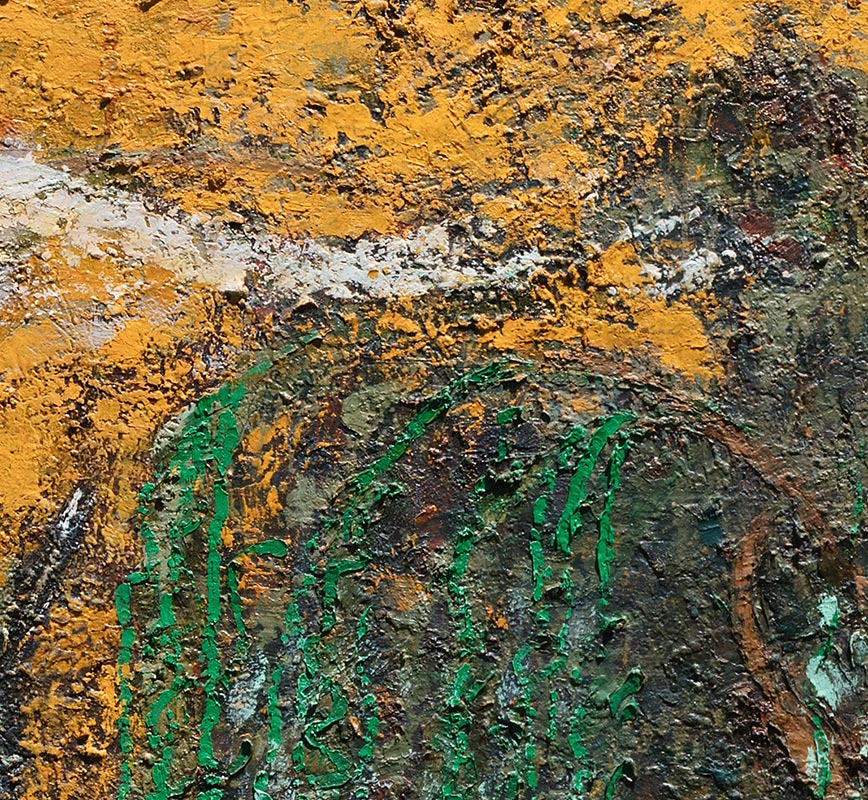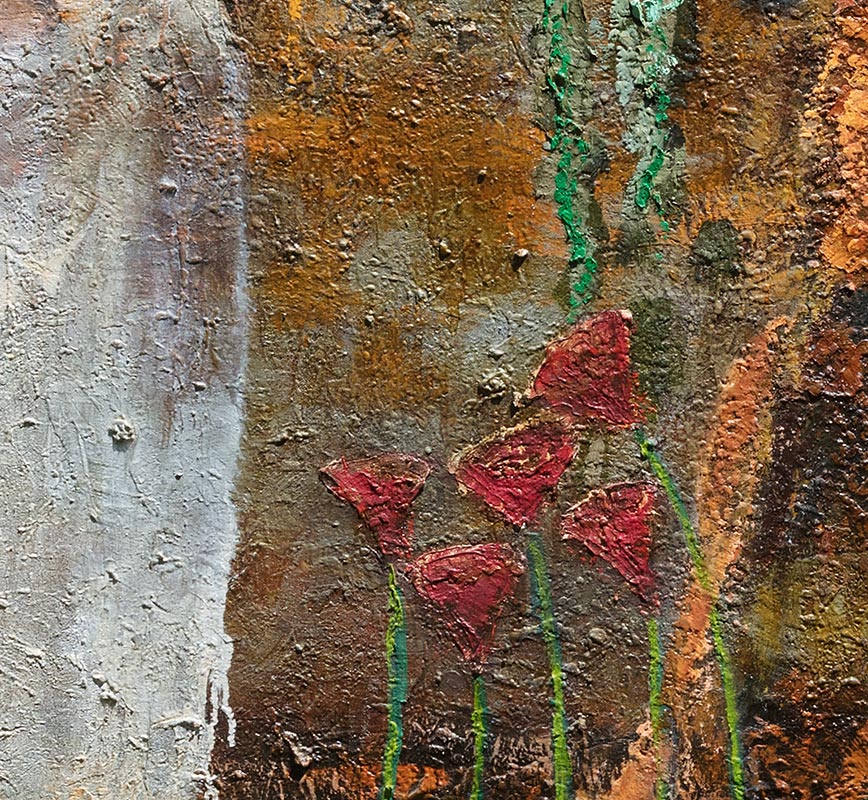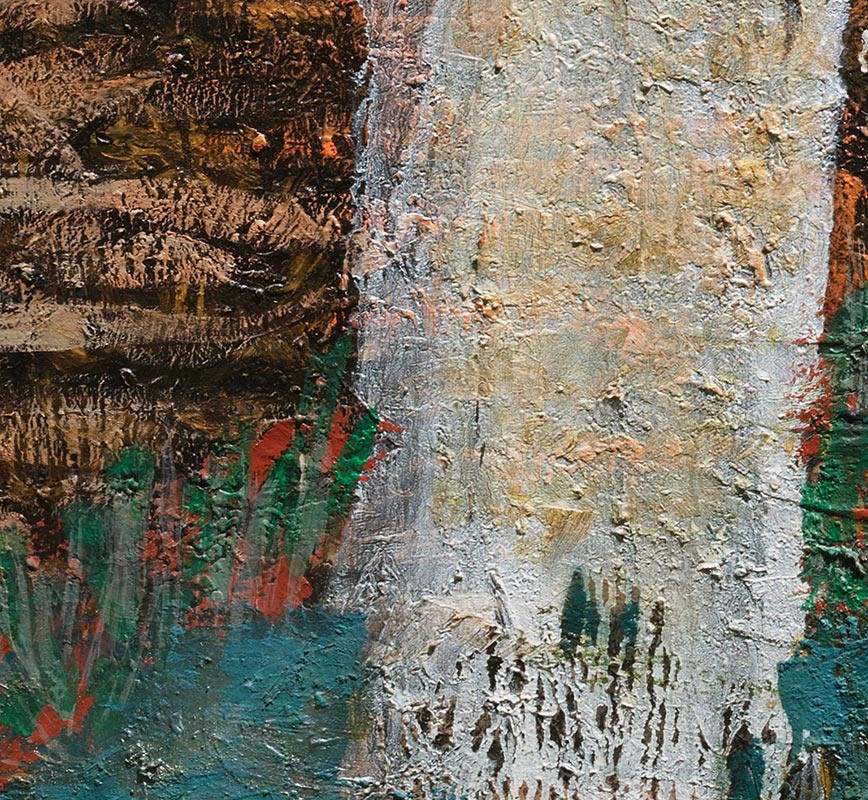In Sogno di Oro, Gregory Kitterle immerses the viewer into a dark, dreamlike atmosphere where light and shadow play a central role. The deep blues and murky tones evoke a nocturnal landscape, with ghostly elements emerging from the textured surface. A large, shadowy ship floats in the distance, illuminated by a faint beam of light cutting through the upper left, suggesting a mysterious journey or escape. Chains and posts anchor the foreground, while a makeshift fence, slightly overgrown with plants, introduces a sense of decay or entrapment, grounding the composition in a physical reality.
...more
In Sogno di Oro, Gregory Kitterle immerses the viewer into a dark, dreamlike atmosphere where light and shadow play a central role. The deep blues and murky tones evoke a nocturnal landscape, with ghostly elements emerging from the textured surface. A large, shadowy ship floats in the distance, illuminated by a faint beam of light cutting through the upper left, suggesting a mysterious journey or escape. Chains and posts anchor the foreground, while a makeshift fence, slightly overgrown with plants, introduces a sense of decay or entrapment, grounding the composition in a physical reality.
The title, Sogno di Oro (which translates to Dream of Gold), contrasts with the dark palette, as if to suggest that even within the shadowy depths of this scene, there lies the allure or pursuit of something precious and unattainable. Kitterle's use of cenospheres—a material often associated with industrial processes—adds another layer of meaning, as if the painting itself is constructed from remnants of modernity, tying together ideas of dreams, industrial decay, and the pursuit of elusive wealth.
The chiaroscuro in this piece, the dramatic contrast between light and dark, may evoke comparisons to artists like J.M.W. Turner, who similarly used light to guide the viewer’s journey through atmospheric landscapes. However, Kitterle’s work remains more fragmented, focusing on surface irregularities and the story they tell through texture. The layers of oil and cenospheres give the surface a raw, tactile quality, reinforcing the notion of wandering through a visual labyrinth where meaning is pieced together gradually.
The tension between the ethereal ship in the distance and the physicality of the foreground elements—chains, posts, and fences—creates a dissonance, as if the dream and reality are intertwined but never fully resolved. Kitterle’s ability to evoke narrative through surface texture and light makes Sogno di Oro a haunting reflection on the relationship between dreams, materiality, and the structures that bind us.
less...




